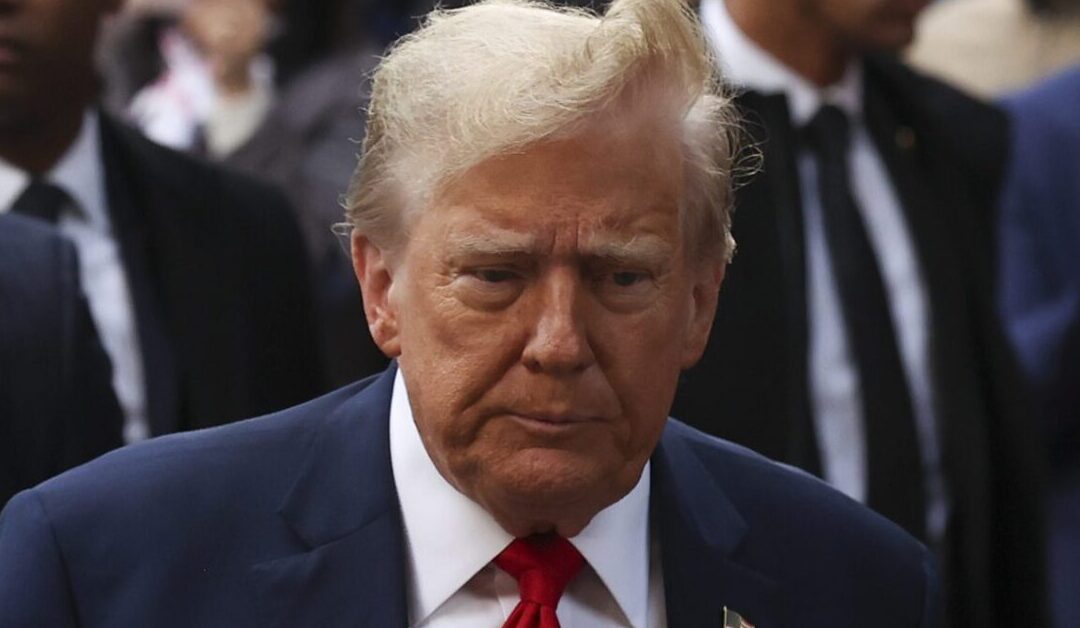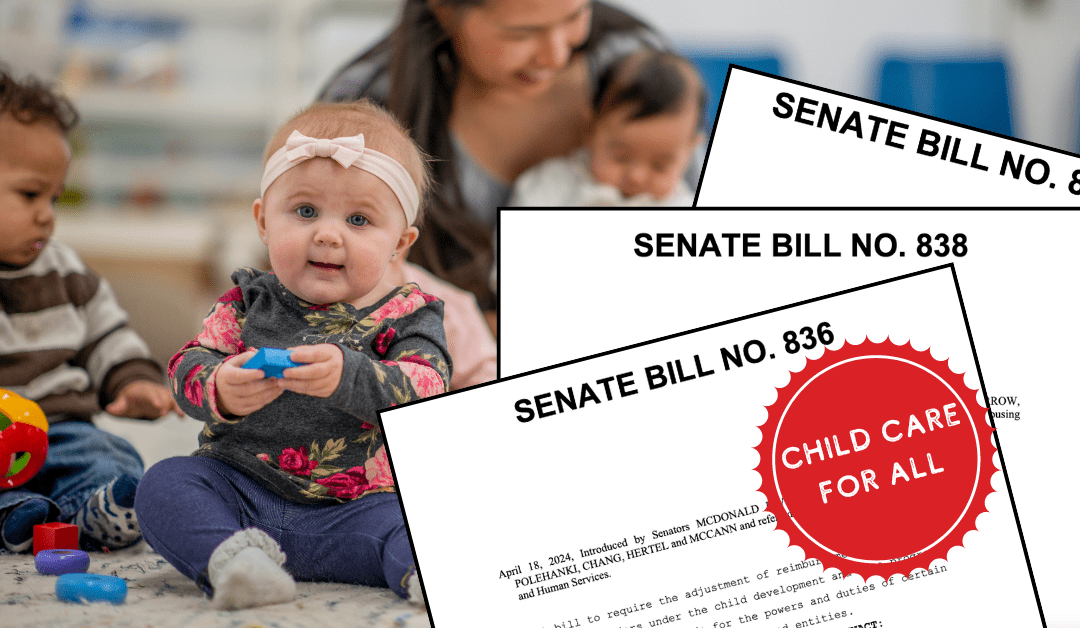
United Auto Workers President Shawn Fain, left, speaks as President Joe Biden looks on during a campaign stop at a phone bank with UAW members in the UAW Region 1 Union Hall, Thursday, Feb. 1, 2024, in Warren, Mich. (AP Photo/Evan Vucci)
The new standards, which are backed by the UAW, GM, and Ford will lead to “fewer asthma attacks, less heart disease, and longer lives,” said Amanda Leland, Executive Director of the Environmental Defense Fund. “The reality is clean cars will save kids.”
In one of the country’s most ambitious climate policies to date, the Biden administration on Wednesday issued regulations that would strictly monitor tailpipe emissions and push for electric cars to make up most of the nation’s new auto sales by 2032.
Under its Clean Cars rule, the Environmental Protection Agency (EPA) would implement a series of emissions requirements most easily met by electric cars, though it would be up to individual automakers to determine how to meet these standards, leaving room for continued production of hybrid vehicles and conventional gas-powered engines.
In a statement, President Joe Biden said the Clean Cars rule represented “historic progress” toward his administration’s goals of reducing carbon pollution by 50% by 2030—and fully eliminating it by 2050—without compromising American jobs.
“Hundreds of new expanded factories across the country. Hundreds of billions in private investments and good-paying union jobs,” he said. “And we’ll meet my goal for 2030 and race forward in the years ahead.”
Addressing the pollution that drives climate change
Carbon emissions from cars and other forms of transportation make up most of the country’s pollutants and contribute heavily to climate change, an increasingly urgent concern after scientists named 2023 the hottest year on record. The EPA says a typical passenger vehicle releases around 4.6 metric tons of carbon dioxide—a greenhouse gas—annually. Fully electric vehicles do not release tailpipe emissions.
Amanda Leland, Executive Director of the non-profit Environmental Defense Fund, pointed to the practical implications of electric vehicles for future generations in a statement.
“Today’s action will cut over seven billion tons of climate pollution—that’s more than all US greenhouse gas pollution last year,” she said. “It will slash deadly soot and reduce smog. That means fewer asthma attacks, less heart disease, and longer lives. The reality is clean cars will save kids.”
Earthjustice president Abigail Dillen echoed Leland’s sentiments. “These standards make clear what we already know: the future of cars is electric,” she said.
The move comes on the heels of Biden’s 2022 Inflation Reduction Act, a landmark law for climate action that provided $370 billion in clean energy incentives nationwide, including unprecedented tax credits for Americans who purchased electric vehicles.
Under the new rule, Americans could still buy used gasoline-burning vehicles and trucks. New regulations won’t apply until model year 2027, with the goal of electric vehicles making up 56% of all car sales in the US by 2032. The sales goal is ambitious, as electric cars comprised just 7.6% of new sales last year—a record number, but well below the 2032 target.
Making Michigan a ‘future mobility powerhouse’
In Michigan, where nearly 20% of the nation’s cars are produced, the move toward more electric vehicles has support from Governor Gretchen Whitmer. Last December, Whitmer signed an executive directive to ensure all state-owned vehicles will be electric by 2040.
Just last month, Whitmer detailed the Battery and Advanced Manufacturing Challenge, a grant-matching program that would reward and support clean energy companies in the Great Lakes State who apply for funding under Biden’s Inflation Reduction Act.
“The new Battery and Advanced Manufacturing Challenge will help us secure our position as a clean energy and future mobility powerhouse,” Whitmer said in a press release. “Thanks to President Biden and our Congressional delegation’s efforts, we can compete for and win federal funding from the Inflation Reduction Act, the CHIPS Act, and the Bipartisan Infrastructure Law to bring supply chains home, create good-paying, middle-class jobs, and lead the future of critical industries.”
In a statement this week, US Senator Debbie Stabenow (D-Michigan) expressed direct support for the Clean Cars rule.
“I’ve always said Michigan automakers are the best in the world. And this is their moment,” she said. “I appreciate EPA’s commitment to engaging with our automakers and autoworkers to develop an ambitious but achievable final rule. It represents an opportunity for union workers to continue to build the vehicles of the future right here in the U.S. and tackle the climate crisis.”
Trump attacks clean energy investments
Despite applause from climate activists and environmentalist groups, the Clean Cars rule faces political opposition. Donald Trump has vowed to repeal the Inflation Reduction Act if elected—including the act’s monumental electric vehicle credits.
Along the campaign trail, Trump has falsely referred to the Clean Cars rule as a ban on non-electric vehicles and disparaged electric cars themselves.
“Crooked Joe is siding with the left-wing crazies who will destroy automobile manufacturing and will destroy the country itself,” Trump said during a campaign stop in Michigan last fall. “The damn things don’t go far enough, and they’re too expensive.”
The price of electric vehicles has dropped substantially in recent years. Data from Cox Automotive shows that as of last month, the average price for a new electric vehicle was just $5,000 more than that of a new gas-powered car. This marks a substantial drop from 2022, when the average new electric car cost about $17,000 more than a gas-powered one.
The UAW, GM, and Ford support the Clean Cars rule
Trump’s skepticism about electric vehicles has been shared by some union auto workers, who fear that the new regulations would call for less production work and, as a result, fewer jobs. In response to initial concerns from union workers when the Clean Cars rule was first discussed in 2021, the Biden administration loosened its time frame for achieving majority-electric car sales and allowed more time for charging station construction across the nation.
“By taking seriously the concerns of workers and communities, the EPA has created a more feasible emissions rule that protects workers building ICE vehicles, while providing a path forward for automakers to implement the full range of automotive technologies to reduce emissions,” the United Auto Workers (UAW) said in a statement supporting the new rule.
Auto giants Ford and General Motors (GM) expressed optimism about the new regulations as well, while acknowledging the combined efforts required for successful implementation.
“We appreciate EPA’s efforts and collaboration in strengthening greenhouse gas emissions standards in ways that reflect the realities of the EV transition,” Ford leaders said in a press release. “The agency’s final rule is ambitious and challenging, and achieving its requirements will take close public-private cooperation.”
GM said it supports the agency’s final rule and vision for lowering emissions. “Although challenging, we believe our commitments and investments in an all-electric future place GM in an excellent position to contribute to the goals of the final rule,” a company statement read.
While the move toward more electric vehicles represents a major shift for both drivers and auto companies, the EPA says it would also financially benefit consumers. Reduced fuel and maintenance costs would save the average American car owner around $6,000 across the life of the vehicle, while around $100 billion in annual “net benefits to society” are also projected.
The Clean Cars rule and other climate investments under the Inflation Reduction Act promise to take center stage during the coming months as Biden and Trump face off along the campaign trail on climate action, consumer spending, and clean energy.
RELATED: Michigan manufacturers score $22M from Biden’s Inflation Reduction Act
Politics

SEIU workers ahead of NFL Draft: We are ‘the backbone of Detroit’
BY KEN COLEMAN, MICHIGAN ADVANCE MICHIGAN—A day ahead of the National Football League annual draft being held in Detroit, Service Employees...

Investigator says Trump, allies were uncharged co-conspirators in plot to overturn Michigan election
DETROIT—A state investigator testified Wednesday that he considers former President Donald Trump and his White House chief of staff to be uncharged...

Michigan Dems introduce ‘Child Care for All’ legislation to lower costs for families
Lawmakers say Michigan is facing a ‘child care crisis.’ But a series of bills introduced this month would help to make child care (much) more...
Local News

The 10 best burger joints in and around Lansing
Warning: Do not read this list if you missed lunch or you will find yourself hopping in the car to drive to these best burger joints in Lansing. ...

10 unique wedding venues in Michigan to suit every kind of couple
From a distillery in Detroit to a summer camp, we’ve rounded up some of Michigan’s most unique wedding venues. Of all the elements you need to...






